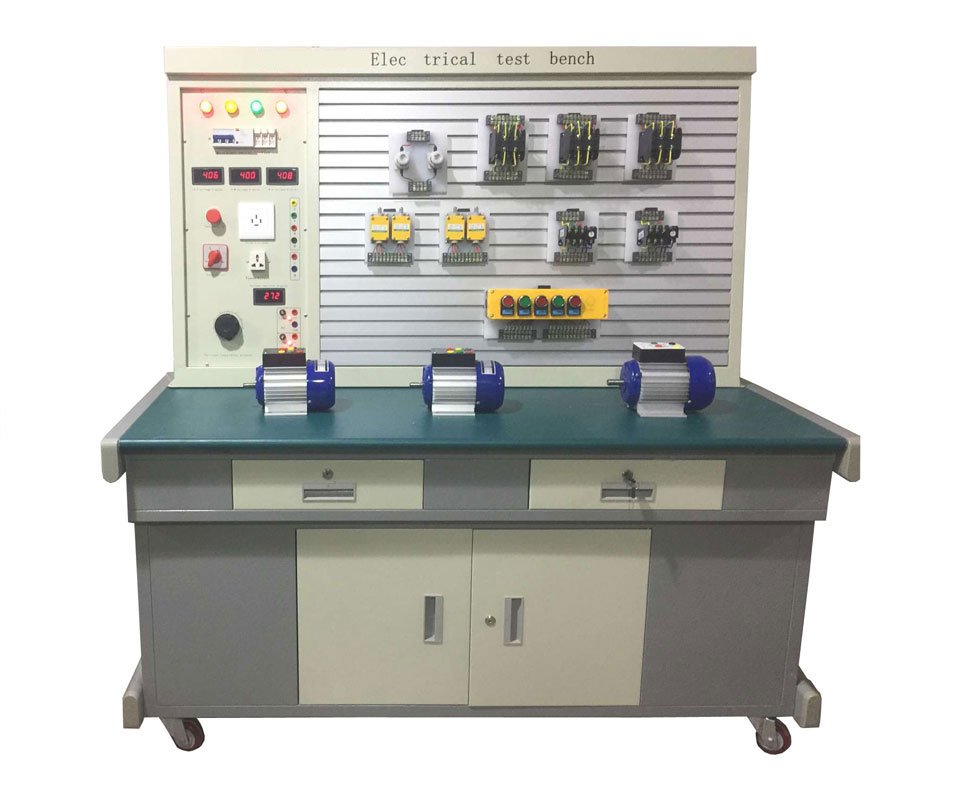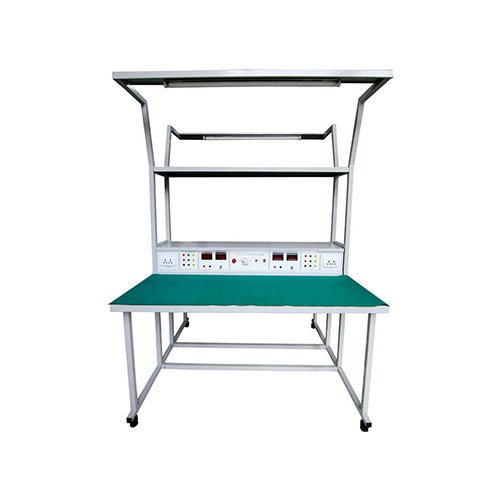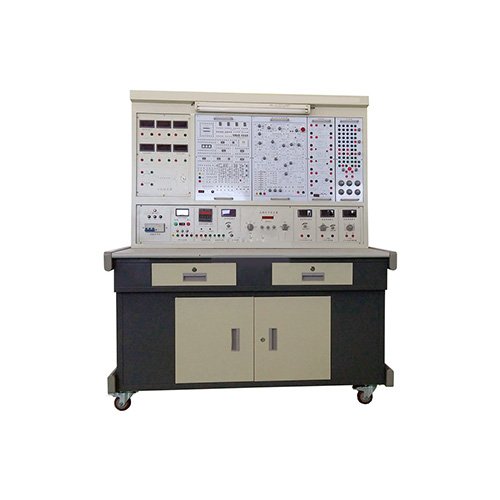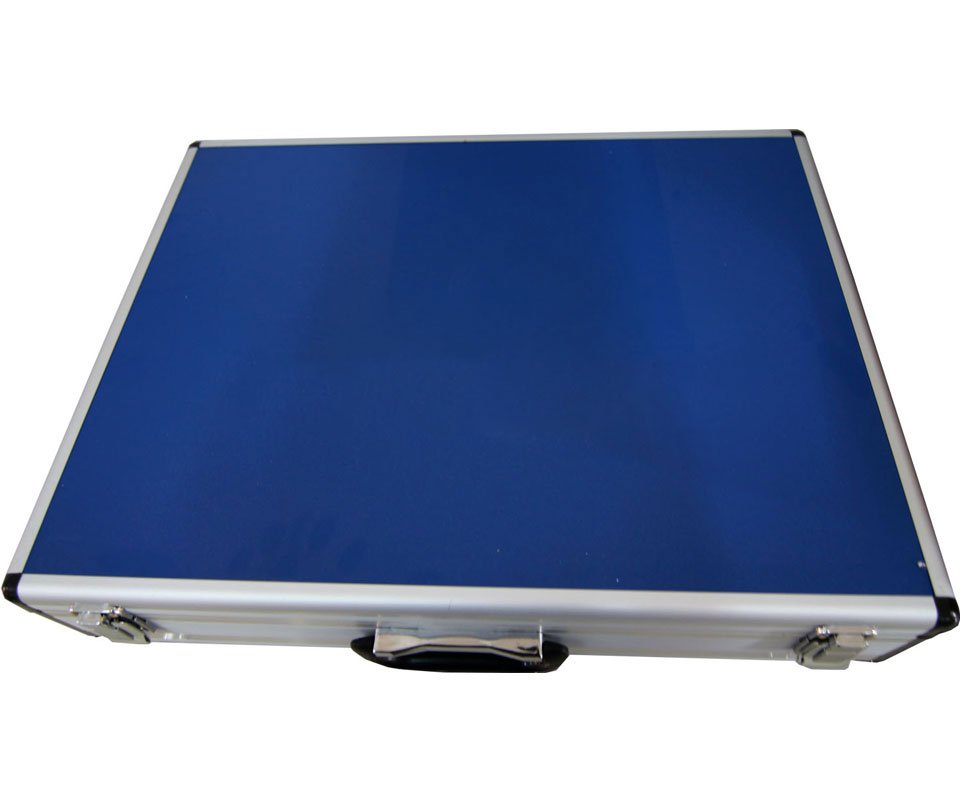- Automobile training equipment series
- Electrical and electronic teaching equipment
- Elevator training series
- Fitter training equipment
- Fluid mechanics experimental equipment
- Hydraulic and pneumatic test bench
- Mechanical teaching equipment
- Robotic automation and mechatronics series
- Welding training equipment
I. Overview
The Motor and Electrical Technology Experimental Device is a novel, comprehensive experimental device designed by our company. It incorporates the requirements of the current experimental syllabi for courses in Chinese universities, including “Electrical Engineering,” “Motors and Drives,” “Micromotor Control,” “Motor Control,” “Relay Contact Control,” “Programmable Controller Technology,” and “Factory Electrical Control.” It is particularly suitable for upgrading existing motor and electrical technology experimental equipment in universities. It also provides ideal experimental equipment for secondary vocational schools and technical colleges, allowing them to quickly establish new or expanded laboratories and experimental courses. It also provides excellent experimental conditions for teachers and graduate students to develop new experiments or conduct scientific research.
II. Features
1. Comprehensiveness: This device integrates all current experimental projects in motor and electrical courses at various universities in China.
2. Highly adaptable and can meet The depth and breadth of experimental teaching for corresponding courses in various schools can be flexibly adjusted as needed, and popularization and improvement can be organically integrated according to the teaching process. The device adopts a modular structure, which is easy to replace. If you need to expand functions or develop new experiments, you can simply add components and they will never be obsolete.
3. Strong Completeness: From instruments and meters, dedicated power supplies, motors, and other experimental components to dedicated experimental connection wires, everything is fully equipped. The performance and specifications of the supporting components are closely aligned with the experimental needs.
4. Strong Intuition: Each experimental pendant adopts a separate structure, with component panels and clear diagrams. The functions of each pendant are clearly defined, making operation and maintenance easy.
5. Strong Scientificity: The device occupies a small space, saving laboratory space and infrastructure investment. The supporting small motors are specially designed to simulate the characteristics and parameters of small and medium-sized motors, and the small motors are low-power, saving energy. Experiments are quiet, neat, and aesthetically pleasing, improving the experimental environment. The electrical control experiments are rich in content and well-designed, not only deepening theoretical knowledge but also laying a solid foundation for students’ transition into the real world. Measuring instruments utilize a combination of pointer (with over-range alarms, etc.), dual-display digital and analog, digital, intelligent, and human-computer interaction. Configuration closely aligned with the needs of teaching experiments, modernizes the device’s measurement capabilities. A timer and alarm recorder provide a unified standard for assessing students’ experimental skills.
6. Strong openness: The control panel power supply is isolated (floating ground design) and equipped with internal and external voltage and current leakage protection devices to ensure operator safety. Each power output features monitoring and short-circuit protection for ease of use. Each measuring instrument has protective functions. The entire device is meticulously designed, backed by reliable component quality and reliable craftsmanship. , the product has excellent performance, all of which create conditions for open experiments and are conducive to improving students’ ability to analyze and solve problems.
III. Technical performance
1. Input power: three-phase four-wire (or three-phase five-wire) ~ 380V ± 10% 50Hz
2. Working environment: temperature -10℃ ~ +40℃ relative humidity <85% (25℃) altitude <4000m
3. Device capacity: <1.5KVA
4. Weight: 480Kg
5. Dimensions: 1700×720×163mm
IV. Basic equipment of the device
1. Power control panel (iron spray-coated structure, aluminum panel)
(1) AC power
Provides three-phase 0~450V adjustable AC power, and can also obtain single-phase 0~250V adjustable power (equipped with a three-phase axial linkage auto-coupling voltage regulator (specification 1.5KVA, 0~450V), overcoming the The three single-phase voltage regulators adopt chain structure or gear structure to avoid many disadvantages). The adjustable AC power output is equipped with overcurrent protection technology, which can automatically protect against overcurrent and direct short circuit between phases and lines, overcoming the trouble caused by replacing fuses. It is equipped with three pointer-type AC voltmeters, which indicate the three-phase grid voltage and three-phase voltage regulation voltage through the switching switch. (2) Two high-voltage DC power supplies provide a set of 220V (0.5A) excitation power supply and 20~230V (3A) continuously adjustable voltage-stabilized armature power supply (with overvoltage, overcurrent, overheating and short circuit soft cut-off automatic recovery protection functions), and are equipped with a DC digital voltmeter and a switching switch. (3) Five systems for personal safety protection A set of three-phase isolation transformers is equipped (the three-phase power supply passes through the key switch and contactor, then to the isolation transformer, and then through the three-phase voltage regulator output) to isolate the output from the grid and protect people. It plays a certain role in protecting personal safety;
It is equipped with a voltage-type leakage protector 1. If there is leakage in the circuit before the isolation transformer, it can implement protection and cut off the power supply;
It is equipped with a voltage-type leakage protector 2. If there is leakage in the circuit after the isolation transformer and the wiring during the experiment, it can alarm and cut off the power supply;
It is equipped with a current-type leakage protector. If there is leakage in the control panel, the leakage current exceeds a certain value, and the power supply is cut off. The high-voltage connection line and socket adopt a fully enclosed structure, which is safe, reliable and prevents electric shock.
(4) Instrument protection system
It is equipped with multiple signal sockets connected to the instrument. If the instrument exceeds the range, it can alarm and cut off the power supply, which plays a good protective role for the instrument.
(5) Timer and alarm recorder (service manager):
It has the functions of setting time, alarming when the time comes, cutting off the power supply and recording the number of various alarms.
(6) Control Two stainless steel pipes are located within the large recess on the front of the control panel for hanging instruments and experimental components. At the bottom of the recess are several small, round, single-phase, three-core 220V power sockets for powering instruments and other components. Three-pole 220V power sockets and three-phase, four-pole 380V power sockets are located on either side of the control panel. A 220V, 40W fluorescent lamp is provided for illuminating the lab bench.
2. Laboratory Table
The laboratory table is constructed of double-layered, matte, densely grained plastic-sprayed iron. The top is fireproof, waterproof, and wear-resistant high-density board. Its sturdy, rectangular, enclosed shape creates an elegant and stylish design. It features two large drawers and doors for storing tools, accessories, and materials. The top is designed to mount the power control panel and provide a spacious and comfortable work surface. The table also features four universal casters and four fixed adjustment mechanisms for easy movement and securement, facilitating laboratory layout.
3. Stainless Steel Motor Conductor Rails, tachometer, and tachometer
Includes the tachometer and stainless steel rails for securing the motor. The stainless steel rails are flat, free of stress deformation, and feature precise machining, excellent concentricity, and excellent interchangeability. They ensure concentricity within ±5° between motors and between motors and the dynamometer. The motors operate with low noise, exhibit typical test parameters, and meet experimental requirements.
4. Three-phase group transformer (composed of three identical single-phase transformers, primary 220V/0.35A, secondary 55V/1.4A)
5. DC compound generator
6. DC shunt motor
7. Compound DC motor
7. Three-phase squirrel cage asynchronous motor
8. Three-phase wire-wound asynchronous motor
9. Three-phase synchronous motor
10. Single-phase capacitor-start asynchronous motor
11. Three-phase two-speed asynchronous motor
12. Calibrated DC dynamometer;
220V, 2.0A, 350W, 1500r/min, it can be used both as a motor and a dynamometer. When used as a motor, it can serve as a generator prime mover or be used to drive a motor to complete four-quadrant testing. When used as a dynamometer, due to its specially designed capacity, it is 2-3 times that of the motor being tested. Calibrated with precision instruments, it can effectively test the motor’s load output torque.
13. Single- and Three-Phase Intelligent Power and Power Factor Meter
Combined with a 24-bit dedicated DSP, a 16-bit high-precision A/D converter, and a high-speed MPU unit, it features a human-computer interaction control mode via keypad and a digital display window. The software utilizes an RTOS design approach and comes with PC monitoring software for enhanced analysis capabilities. It can simultaneously measure two single-phase power channels, P1 and P2, and display the sum of the two power channels on a separate 5-digit LED (using the two-meter method to measure total three-phase power). Power measurement accuracy is Class 1.0, power factor measurement range is 0.3-1.0, voltage and current ranges are 450V and 5A, and it can automatically determine load characteristics. The display shows “L” for inductive resistance and “C” for capacitive resistance. The display does not show pure resistance. The display also stores measurement data for easy access.
14. Three-phase adjustable resistors (three sets of 90Ω × 2/1.3A ceramic disc resistors)
15. Three-phase adjustable resistors (three sets of 900Ω × 2/0.41A ceramic disc resistors)
16. Adjustable resistors and capacitors
Provides one set each of 90Ω × 2/1.3A and 900Ω × 2/0.41A ceramic disc resistors, 35μF/450V, and 4μF/450 One V power capacitor each.
17. Waveform Test and Switchboard
Comes with the transformer waveform test section, two three-pole double-throw switches, and one double-pole double-throw switch.
18. Relay Contact Control (I)
Provides one circuit breaker, one fillable fuse, one black fuse for controlling the circuit protection, two signal lights, one headlight, three push buttons (one each yellow, green, and red), one AC contactor, and one thermal relay. All components are mounted on the training kit panel.
19. Relay Contact Control Assembly (II)
Provides two AC contactors, one time relay, one 220V/26V/6.3V transformer, one rectifier bridge, one dynamic braking resistor, and one pushbutton. All components are mounted on the experimental assembly panel.
20. Equipped with a Mitsubishi FX1N-40MR programmable controller and a matching Mitsubishi programming cable. Provides the +24V DC power supply required for the experiment. An overvoltage protection circuit is provided to protect the main unit from damage caused by excessive power supply voltage.
21. Experimental connecting wires and accessories
Use high-reliability protective The hand-inserted cable is constructed with a sleeve (eliminating any risk of electric shock). The cable is made of oxygen-free copper, drawn into a multi-strand, hair-thin wire for exceptional flexibility. It is insulated with a nitrile polyvinyl chloride (PVC) layer, offering excellent flexibility, high voltage resistance, high strength, resistance to hardening, and toughness. The plug is constructed of solid copper with a beryllium copper spring for excellent contact.
V. Device Safety Protection System
1. Three-phase four-wire (or three-phase five-wire) power input is isolated and output (floating design). The main power supply is controlled by a three-phase key switch, and a three-phase illuminated fuse is provided as a phase failure indicator.
2. The control panel power supply is controlled by a contactor via the start and stop buttons. 3. The panel is equipped with two voltage-type leakage protection devices. If leakage occurs within the control panel or in the high-voltage output, an alarm will be sounded and the main power supply will be cut off, ensuring the safety of the experimental process.
4. The panel is equipped with a current-type leakage protection device. If leakage occurs in the control panel and the leakage current exceeds a certain value, the power supply will be cut off.
5. The three-phase voltage regulator on the panel is equipped with an overcurrent protection device on both the primary and secondary sides. If the voltage regulator short-circuits or the load is too heavy, and the current exceeds the set value, the system will sound an alarm and cut off the main power supply.
6. A timer and alarm recorder (service manager) is installed to record the number of violations, providing information for students’ experimental skills assessment. Provide a unified standard.
7. All power supplies and instruments have reliable protection functions.
8. Experimental wiring is safe, reliable, and prevents electric shock.
VI. Experimental Projects
(I) DC Motor Experiment
1. Familiarization Experiment
2. DC Generator
3. DC Shunt Motor
4. DC Series Motor
(II) Transformer Experiment
1. Single-Phase Transformer
2. Three-Phase Transformer
3. Connection Group and Asymmetrical Short Circuit of Three-Phase Transformer
4. Three-Phase Three-Winding Transformer
5. Parallel Operation of Single-Phase Transformers
6. Parallel Operation of Three-Phase Transformers
(III) Asynchronous Motor Experiment
1. Operation of Three-Phase Squirrel Cage Asynchronous Motor Operating Characteristics
2. Starting and Speed Control of Three-Phase Asynchronous Motors
3. Single-Phase Capacitor-Start Asynchronous Motors
4. Single-Phase Capacitor-Start Asynchronous Motors
5. Single-Phase Capacitor-Run Asynchronous Motors
6. Dual-Speed Asynchronous Motors
7. Three-Phase Asynchronous Generators
(IV) Synchronous Motor Experiments
1. Operating Characteristics of Three-Phase Synchronous Generators
2. Grid-Connected Operation of Three-Phase Synchronous Generators
3. Three-Phase Synchronous Motors
4. Determination of Three-Phase Synchronous Motor Parameters
(V) Determination of Motor Mechanical Characteristics
1. Mechanical Characteristics of a DC Separately Excited Motor in Various Operating Conditions
2. Mechanical Characteristics of a Three-Phase Asynchronous Motor in Various Operating Conditions Characteristics
3. Measurement and Plotting of the M-S Curve of a Three-Phase Asynchronous Motor
(VI) Controlled Motor Experiments
1. Permanent Magnet DC Tachometer Generator Experiment
2. Rotary Encoder Experiment
3. Torque Synchro Experiment
4. Controlled Synchro Experiment
5. Sine and Cosine Rotary Transformer Experiment
6. Stepper Motor Experiment
7. Linear Motor Experiment
8. High-Voltage DC Brushless Motor Experiment
(VII) Relay Contact Control and Electric Drive (Electrical Control) Experiments
1. Three-Phase Asynchronous Motor Inching and Self-Lock Control Circuits
2. Three-Phase Asynchronous Motor Forward and Reverse Control Circuits
3. Three-Phase Asynchronous Motor Y-Δ Step-Down Starting Control Circuit 4. Energy-consuming braking control of three-phase asynchronous motors
5. Starting sequence control of two three-phase asynchronous motors
6. Starting control circuit of a three-phase wire-wound asynchronous motor
7. Control circuit of a dual-speed asynchronous motor
8. Automatic reciprocating cycle control circuit of a worktable
9. Two-site control circuit
10. Electrical control circuit of a C620 lathe
11. Experiment with the electrical control circuit of an electric hoist
12. Debugging and analysis of the analog control circuit of an X62W milling machine
13. Electrical control circuit of an M7130 surface grinder
(VIII) Programmable Controller Experiments
1. Basic instruction programming exercises
2. Analog control of a vending machine
3. Simulation of a four-story elevator control system
4. Simulation of liquid mixing device control
5. Motor control (jog control, self-locking control, forward/reverse control, star/delta starting)
6. Simulation of a four-section conveyor belt
7. Simulation of automatic feeding and loading system control
8. Simulation of robotic arm movements
9. Simulation control of LED digital displays
10. Simulation control of a five-phase stepper motor
11. Simulation control of traffic lights at intersections
12. Sequence control of assembly lines
13. Simulation control of water tower water levels
14. Simulation of rolling mill control systems
15. Simulation of mail sorting systems
16. Automatic stamping systems
17. Fountain control simulation
18. Machining center control simulation
19. Automatic washing machine simulation
20. Electroplating system simulation






